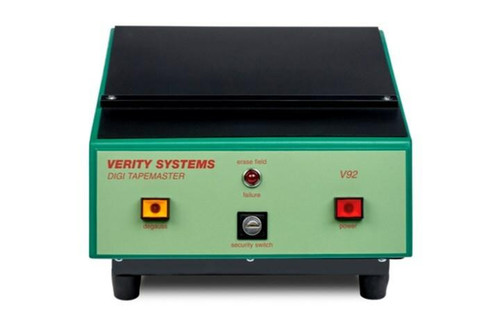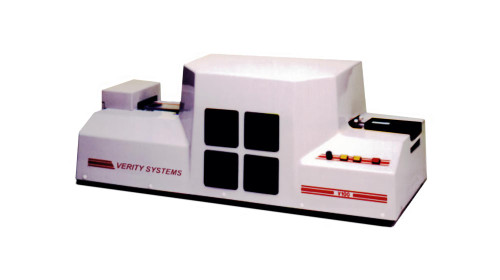DeMAG Super Degausser
The DeMAG Super Degausser is a powerful multi-pulse super degausser capable of delivering up to 40,000 gauss, making data stored on hard drives forensically unrecoverable. Designed for hard drive decommissioning, this state-of-the-art device eliminates data while demagnetizing the powerful neodymium magnets within the hard drive, ensuring easy disassembly and recycling of high-value components.
Key Features of the DeMAG:
1. Advanced Multi-Pulse Technology
- The DeMAG delivers multiple pulses of high-intensity magnetic fields (up to 4 Tesla), ensuring that all traces of data are irreversibly destroyed.
- The system operates within 1 minute per hard drive, making it efficient for high-volume data centers or recycling facilities.
2. Environmental Sustainability
- The DeMAG is eco-friendly, designed to demagnetize neodymium magnets so they don’t stick together during the DiskMantler disassembly process. This innovation facilitates recycling, helping to reduce e-waste and recover valuable resources.
3. Unmatched Data Security with IRONCLAD Verification
- Equipped with the IRONCLAD system, the DeMAG offers full data destruction verification. This system captures images and data before and after the degaussing process, providing a verifiable audit trail of the destruction process.
4. Automatic and Hands-Free Operation
- The DeMAG is designed for simplicity and efficiency. Insert the hard drive into the media slot, and the device automatically handles the degaussing and demagnetization process.
Why Choose the DeMAG for Hard Drive Decommissioning?
A Comprehensive Solution
-
Data Security: By ensuring that data is unrecoverable, the DeMAG meets the highest standards, including those set by the NSA, DoD, GDPR, and more. This is particularly valuable for organizations in healthcare, finance, or government sectors that handle sensitive data.
-
Efficient Recycling: Pairing the DeMAG with the DiskMantler offers an efficient way to dismantle and recycle the high-value components of hard drives. This process extracts critical elements like rare-earth magnets while minimizing the environmental impact associated with traditional methods such as shredding or crushing.
-
Scalability: Whether you’re running a small operation or a large data center, the DeMAG is designed to integrate with automated systems like conveyor belts or robotics, allowing for scalable operations and higher throughput.
Best Practices for HDD Decommissioning
-
Start with the DeMAG
- Begin the decommissioning process by inserting the HDD into the DeMAG™ to fully erase all data and demagnetize the drive components.
-
Next, Use the DiskMantler
- After degaussing, pass the hard drive through the DiskMantler, which uses shock and vibration to dismantle the hard drive into its individual components (case, platters, magnets, etc.).
-
Recycle and Reintegration
- Recycle the extracted rare-earth magnets and other valuable elements, reintegrating them into the supply chain to minimize e-waste.
Compliance and Data Security Standards
The DeMAG helps organizations stay compliant with various global and local data security regulations, including:
- DoD (Department of Defense)
- GDPR (General Data Protection Regulation)
- HIPAA (Health Insurance Portability and Accountability Act)
- NIST SP 800-88r1
By adhering to these strict standards, companies can avoid legal complications while ensuring the highest level of data security.
Revolutionizing HDD Decommissioning
The DeMAG is not just a device for destroying data—it’s an all-encompassing solution for efficient, scalable, and sustainable hard drive decommissioning. By pairing it with the DiskMantler, organizations can securely destroy data, dismantle hard drives, and recover valuable resources, all while minimizing environmental impact. This makes the DeMAG the future of data destruction in an eco-conscious world.
Videos Hide Videos Show Videos
Custom Field
- Powerful Magnetic Erasure: Generates 40,000+ gauss magnetic field strength
- Erases hard drives and tapes in approximately 30 seconds.
- Meets NSA, DoD, GDPR, and more stringent data destruction standards.

















